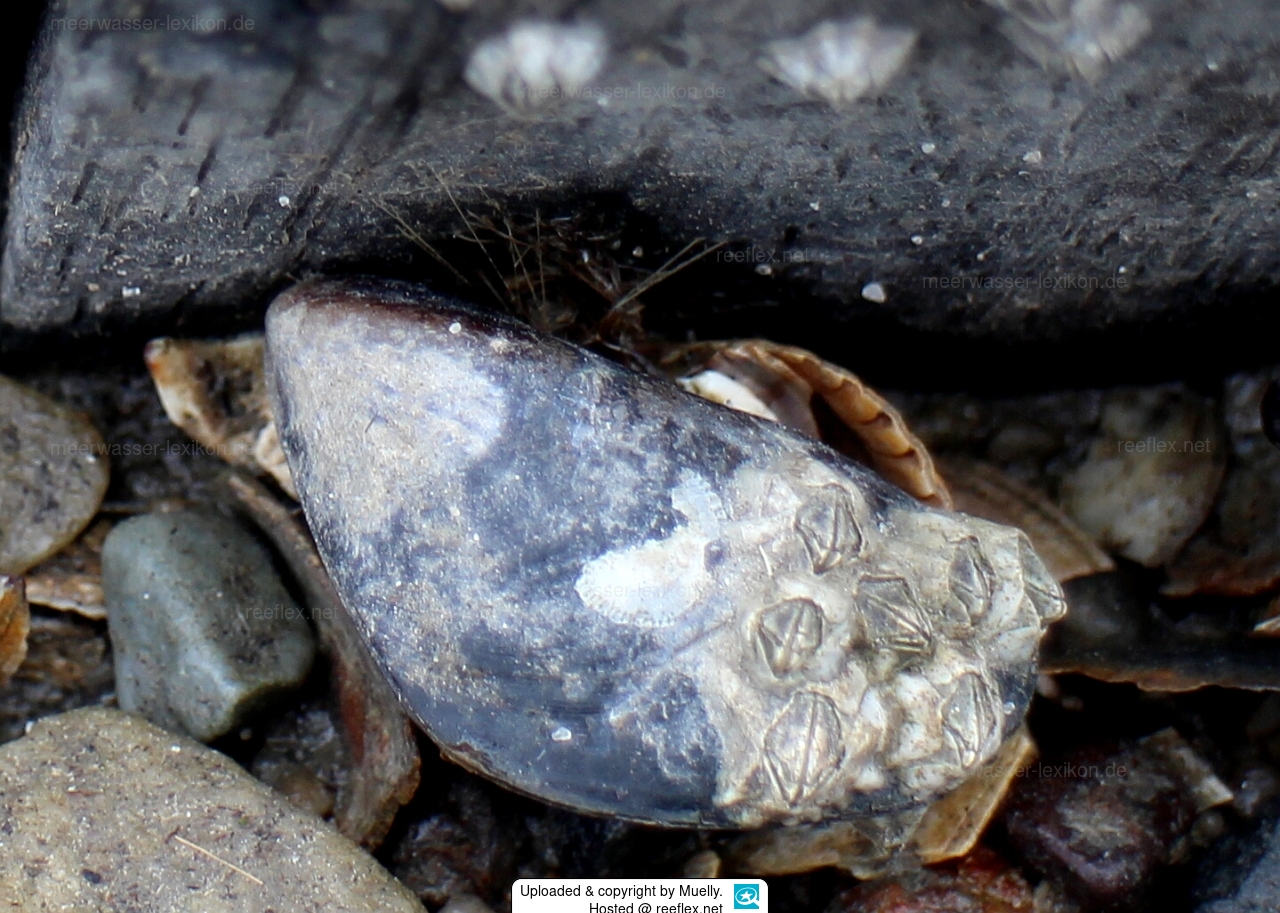Info
Linnaeus, 1758
Synonyms:
Mytilus abbreviatus Lamarck, 1819
Mytilus angulatus Williamson, 1834
Mytilus borealis Lamarck, 1819
Mytilus edulis edulis Linnaeus, 1758
Mytilus edulis pusillus MacGillivray, 1843
Mytilus elegans Brown, 1827
Mytilus grunerianus Dunker, 1853
Mytilus minganensis Mighels, 1844
Mytilus notatus DeKay, 1843
Mytilus pellucidus Pennant, 1777
Mytilus petasunculinus Locard, 1886
Mytilus retusus Lamarck, 1819
Mytilus retusus var. acrocyrta Locard, 1889
Mytilus solitarius Williamson, 1834
Mytilus spathulinus Locard, 1889
Mytilus subsaxatilis Williamson, 1834
Mytilus trigonus Locard, 1889
Mytilus ungulatus Linnaeus, 1758
Mytilus variabilis Fischer von Waldheim, 1807
Mytilus vulgaris da Costa, 1778
Perna ungulina Philipsson, 1788
Classification: Biota > Animalia (Kingdom) > Mollusca (Phylum) > Bivalvia (Class) > Pteriomorphia (Subclass) > Mytiloida (Order) > Mytiloidea (Superfamily) > Mytilidae (Family) > Mytilus (Genus) > Mytilus edulis (Species)
Poisoning by mussels is one of the most frequent poisonings by marine animals worldwide!
Often one hears about poisoning by spoiled mussels, but this is mostly not true.
Mussels themselves are not poisonous, but they absorb the toxins through food and store them in their bodies for a while.
In the time from May to September poisonings by mussels occur particularly frequently, in the cold season it is actually hardly reported.
Poisonings have been observed particularly frequently with the following mussels:
Mytilus californianus Conrad, 1837.
Mytilus edulis Linnaeus, 1758
Ostrea edulis Linnaeus, 1758
Saxidomus gigantea (Deshayes, 1839)
Saxidomus nuttalli Conrad, 1837
Unfortunately, since edible mussels cannot be distinguished from poisonous mussels before consumption, it is recommended to boil mussels with sodium bicarbonate (/sodium hydrogen carbonate, NaHCO₃) for half an hour (1 tablespoon to one liter of water) before eating, as the mussel canning industry does.
How do the shellfish poisonings occur?
Mussels filter seawater and in the process ingest phytoplankton, especially algae, diatoms, and dinoflagellates, which can produce toxins under certain circumstances, for example, this is the case during times of annual algal blooms.
What to do in case of shellfish poisoning (mytilism)
All about types of poisoning, causes, signs, symptoms, complaints, diagnosis, complications, doctor consultation, treatment & therapy can be found at
Synonyms:
Mytilus abbreviatus Lamarck, 1819
Mytilus angulatus Williamson, 1834
Mytilus borealis Lamarck, 1819
Mytilus edulis edulis Linnaeus, 1758
Mytilus edulis pusillus MacGillivray, 1843
Mytilus elegans Brown, 1827
Mytilus grunerianus Dunker, 1853
Mytilus minganensis Mighels, 1844
Mytilus notatus DeKay, 1843
Mytilus pellucidus Pennant, 1777
Mytilus petasunculinus Locard, 1886
Mytilus retusus Lamarck, 1819
Mytilus retusus var. acrocyrta Locard, 1889
Mytilus solitarius Williamson, 1834
Mytilus spathulinus Locard, 1889
Mytilus subsaxatilis Williamson, 1834
Mytilus trigonus Locard, 1889
Mytilus ungulatus Linnaeus, 1758
Mytilus variabilis Fischer von Waldheim, 1807
Mytilus vulgaris da Costa, 1778
Perna ungulina Philipsson, 1788
Classification: Biota > Animalia (Kingdom) > Mollusca (Phylum) > Bivalvia (Class) > Pteriomorphia (Subclass) > Mytiloida (Order) > Mytiloidea (Superfamily) > Mytilidae (Family) > Mytilus (Genus) > Mytilus edulis (Species)
Poisoning by mussels is one of the most frequent poisonings by marine animals worldwide!
Often one hears about poisoning by spoiled mussels, but this is mostly not true.
Mussels themselves are not poisonous, but they absorb the toxins through food and store them in their bodies for a while.
In the time from May to September poisonings by mussels occur particularly frequently, in the cold season it is actually hardly reported.
Poisonings have been observed particularly frequently with the following mussels:
Mytilus californianus Conrad, 1837.
Mytilus edulis Linnaeus, 1758
Ostrea edulis Linnaeus, 1758
Saxidomus gigantea (Deshayes, 1839)
Saxidomus nuttalli Conrad, 1837
Unfortunately, since edible mussels cannot be distinguished from poisonous mussels before consumption, it is recommended to boil mussels with sodium bicarbonate (/sodium hydrogen carbonate, NaHCO₃) for half an hour (1 tablespoon to one liter of water) before eating, as the mussel canning industry does.
How do the shellfish poisonings occur?
Mussels filter seawater and in the process ingest phytoplankton, especially algae, diatoms, and dinoflagellates, which can produce toxins under certain circumstances, for example, this is the case during times of annual algal blooms.
What to do in case of shellfish poisoning (mytilism)
All about types of poisoning, causes, signs, symptoms, complaints, diagnosis, complications, doctor consultation, treatment & therapy can be found at







 Muelly
Muelly
















